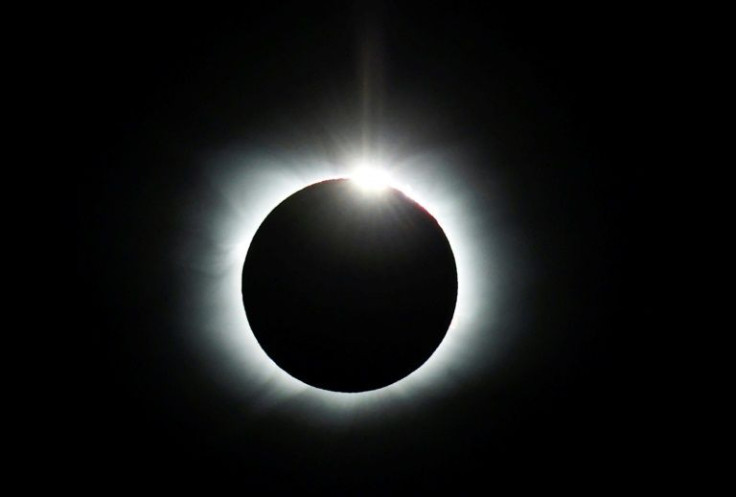Watch Moon's Shadow Engulf Earth In Satellite Videos Of This Year's Last Solar Eclipse
KEY POINTS
- The clips show the Moon casting an eerie shadow on the Earth
- The clip looks otherworldly, even evoking a sense of an imminent apocalypse
- At least three videos of the phenomenon were captured by EUMETSAT satellites
Images of the partial solar eclipse that occurred Tuesday are making rounds on social media. These are nothing compared to the view of the last solar eclipse of the year seen from space, as captured by satellites.
In the videos, our natural satellite, the Moon, can be seen casting an eerie shadow on the Earth's surface as it moves past our planet. The videos look otherworldly and evoke a sense of an imminent apocalypse.
At least three videos of the spooky phenomenon were reportedly captured by satellites of the European Organisation for the Exploitation of Meteorological Satellites (Eumetsat). The Meteosat satellites from Eumetsat operate in geostationary orbit and provide weather data for forecasting and long-term predictions of climate change.
"Look near the top of the video, especially on the right-hand side: Can you see the moving dark area? That's the shadow," Simon Proud, a senior scientist at the U.K.'s National Centre for Earth Observation and at RAL Space (a part of the Rutherford Appleton Laboratory), wrote as he shared a video of the phenomenon on Twitter Monday.
The shadow of the Moon passing over the Earth during today's #Eclipse, as seen by @eumetsat's #Meteosat.
— Simon Proud (@simon_sat) October 25, 2022
Look near the top of the video, especially on the right hand side: Can you see the moving dark area? That's the shadow! pic.twitter.com/iqesMAdtXL
Proud later tweeted one more video captured from Meteosat-9, which is one of the three operational satellites, the other two being Meteosats-10 and -11.
"You can see the shadow of the moon moving from left to right, eventually merging with the darkness of sunset," he noted in the caption of the clip.
Another view of today's Eclipse. This time from @eumetsat's #Meteosat-9 spacecraft that covers the Indian Ocean region.
— Simon Proud (@simon_sat) October 25, 2022
You can see the shadow of the moon moving from left to right, eventually merging with the darkness of sunset. https://t.co/5IwnXHBcZV pic.twitter.com/yV5dERACy4
The U.S. National Oceanic and Atmospheric Administration (NOAA) was not one to be left behind. It shared geocolor footage of the Earth from the satellite Meteosat-11, which is a partner satellite to the NOAA's fleet of meteorological observers.
The last partial #SolarEclipse of 2022 was caught by our European partner's satellite, #Meteosat11, this morning! In this #GeoColor imagery, you can see the moon's shadow travel over the North Atlantic and Europe, before ending over Asia at 9:01 am EDT. pic.twitter.com/1abVXEYBH0
— NOAA Satellites (@NOAASatellites) October 25, 2022
The caption of the NOAA video read, "The last partial #SolarEclipse of 2022 was caught by our European partner's satellite, #Meteosat11, this morning! In this #GeoColor imagery, you can see the moon's shadow travel over the North Atlantic and Europe, before ending over Asia at 9:01 am EDT."
The solar eclipse captured in the satellite videos was unique in that it was the last solar eclipse of the year. The partial solar eclipse was visible from Europe and parts of Africa and Asia. It was the second solar eclipse of the year, with the solar eclipse on April 30 being the first one.
The next solar eclipse will be on April 20, 2023, and it will be a hybrid solar eclipse.
But there is still one eclipse left to be witnessed this year. It is the lunar eclipse that is happening on Nov 8, marking the last eclipse of the year.

© Copyright IBTimes 2024. All rights reserved.





















